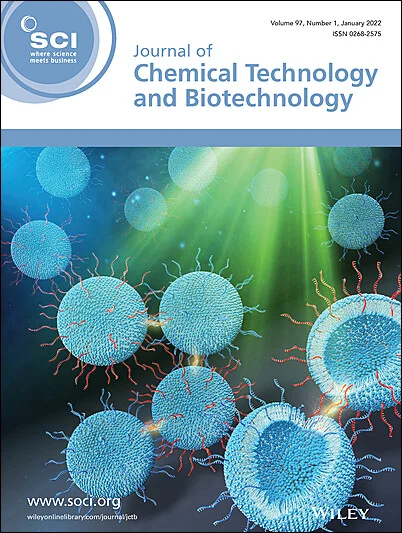Priya Dharshini Palanivel, Samsudeen Naina Mohamed, Gunda Mohanakrishna, Srinithya Ravinuthala, S Saravanan
求助PDF
{"title":"利用微生物燃料电池生产能源:微生物学观点和电子转移改进","authors":"Priya Dharshini Palanivel, Samsudeen Naina Mohamed, Gunda Mohanakrishna, Srinithya Ravinuthala, S Saravanan","doi":"10.1002/jctb.7788","DOIUrl":null,"url":null,"abstract":"<p>Microbial fuel cells (MFCs) are sustainable energy technologies that could resolve pollution challenges brought by various activities. It can meet energy demand by producing bioelectricity through catabolizing organic matter. Over the past two decades, research on many microbes have been used in MFCs, which intrigued researchers to explore the underlying electron transfer mechanism between microbe and anode. Electron transfer between electrode and microorganism occurs via different pathways: direct, indirect electron transfer and interspecies electron transfer. <i>Shewanella</i> and <i>Geobacter</i> are well-known for microbe–electrode and microbe–microbe electron transfer. This review provides an overview of the significant varieties of microbes utilized in MFCs for simultaneous bioelectricity generation and wastewater treatment. Mechanisms of different modes of electron transfer involved during the oxidation of organic wastes in the anode section of MFCs are highlighted. Furthermore, this review also details some of the techniques to promote extracellular electron transfer efficiency which is important for the enhanced performance of MFC in terms of power, current generation and wastewater remediation. A perspective of challenges to be addressed for the effective functioning of these technologies, opportunities for MFC systems to be scaled up and associated techno-economic analysis are discussed. © 2024 Society of Chemical Industry (SCI).</p>","PeriodicalId":15335,"journal":{"name":"Journal of chemical technology and biotechnology","volume":"100 4","pages":"672-687"},"PeriodicalIF":2.8000,"publicationDate":"2024-11-28","publicationTypes":"Journal Article","fieldsOfStudy":null,"isOpenAccess":false,"openAccessPdf":"","citationCount":"0","resultStr":"{\"title\":\"An insight on energy production using microbial fuel cell: A microbiological perspective and electron transfer improvement\",\"authors\":\"Priya Dharshini Palanivel, Samsudeen Naina Mohamed, Gunda Mohanakrishna, Srinithya Ravinuthala, S Saravanan\",\"doi\":\"10.1002/jctb.7788\",\"DOIUrl\":null,\"url\":null,\"abstract\":\"<p>Microbial fuel cells (MFCs) are sustainable energy technologies that could resolve pollution challenges brought by various activities. It can meet energy demand by producing bioelectricity through catabolizing organic matter. Over the past two decades, research on many microbes have been used in MFCs, which intrigued researchers to explore the underlying electron transfer mechanism between microbe and anode. Electron transfer between electrode and microorganism occurs via different pathways: direct, indirect electron transfer and interspecies electron transfer. <i>Shewanella</i> and <i>Geobacter</i> are well-known for microbe–electrode and microbe–microbe electron transfer. This review provides an overview of the significant varieties of microbes utilized in MFCs for simultaneous bioelectricity generation and wastewater treatment. Mechanisms of different modes of electron transfer involved during the oxidation of organic wastes in the anode section of MFCs are highlighted. Furthermore, this review also details some of the techniques to promote extracellular electron transfer efficiency which is important for the enhanced performance of MFC in terms of power, current generation and wastewater remediation. A perspective of challenges to be addressed for the effective functioning of these technologies, opportunities for MFC systems to be scaled up and associated techno-economic analysis are discussed. © 2024 Society of Chemical Industry (SCI).</p>\",\"PeriodicalId\":15335,\"journal\":{\"name\":\"Journal of chemical technology and biotechnology\",\"volume\":\"100 4\",\"pages\":\"672-687\"},\"PeriodicalIF\":2.8000,\"publicationDate\":\"2024-11-28\",\"publicationTypes\":\"Journal Article\",\"fieldsOfStudy\":null,\"isOpenAccess\":false,\"openAccessPdf\":\"\",\"citationCount\":\"0\",\"resultStr\":null,\"platform\":\"Semanticscholar\",\"paperid\":null,\"PeriodicalName\":\"Journal of chemical technology and biotechnology\",\"FirstCategoryId\":\"5\",\"ListUrlMain\":\"https://onlinelibrary.wiley.com/doi/10.1002/jctb.7788\",\"RegionNum\":4,\"RegionCategory\":\"生物学\",\"ArticlePicture\":[],\"TitleCN\":null,\"AbstractTextCN\":null,\"PMCID\":null,\"EPubDate\":\"\",\"PubModel\":\"\",\"JCR\":\"Q3\",\"JCRName\":\"BIOTECHNOLOGY & APPLIED MICROBIOLOGY\",\"Score\":null,\"Total\":0}","platform":"Semanticscholar","paperid":null,"PeriodicalName":"Journal of chemical technology and biotechnology","FirstCategoryId":"5","ListUrlMain":"https://onlinelibrary.wiley.com/doi/10.1002/jctb.7788","RegionNum":4,"RegionCategory":"生物学","ArticlePicture":[],"TitleCN":null,"AbstractTextCN":null,"PMCID":null,"EPubDate":"","PubModel":"","JCR":"Q3","JCRName":"BIOTECHNOLOGY & APPLIED MICROBIOLOGY","Score":null,"Total":0}
引用次数: 0
引用
批量引用

 求助内容:
求助内容: 应助结果提醒方式:
应助结果提醒方式:


